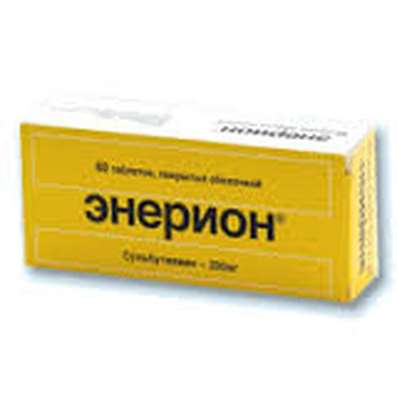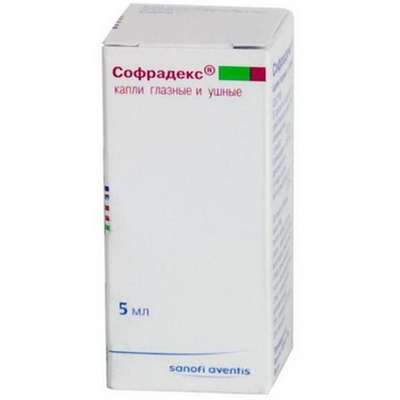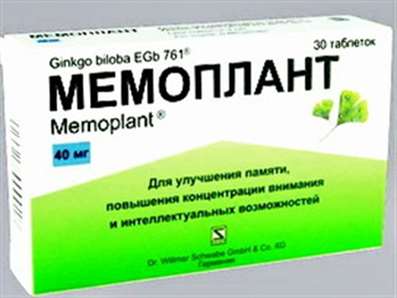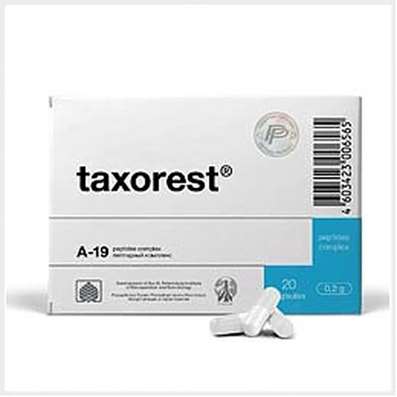Instruction for use: Cetirizine
I want this, give me price
The Latin name of the substance Cetirizine
Cetirizinum (genus. Cetirizini)
Chemical name
[2- [4 - [(4-Chlorophenyl) phenylmethyl] -1-piperazinyl] ethoxy] acetic acid (as hydrochloride)
Gross formula
C21H25ClN2O3
Pharmacological group:
H1-Antihistamines
The nosological classification (ICD-10)
H10.1 Acute atopic conjunctivitis: Allergic conjunctivitis; Allergic eye diseases; Allergic conjunctivitis; Allergic conjunctivitis caused by chemical and physical factors; Allergic rhinoconjunctivitis; Allergic inflammation of the eyes; Spring Qatar; Spring keratitis; Spring conjunctivitis; Conjunctivitis allergic; Year-round allergic conjunctivitis; Exacerbation of pollinosis in the form of rhinoconjunctival syndrome; Acute allergic keratoconjunctivitis; Acute allergic conjunctivitis; Superficial bacterial infection of the eyes; Rhinoconjunctivitis; Seasonal allergic conjunctivitis; Seasonal conjunctivitis; SENSORY; Chronic allergic keratoconjunctivitis; Chronic allergic conjunctivitis
H11.4 Other conjunctival vascular diseases and cysts: Edema of the conjunctiva; Secondary hyperemia of the eye; Hyperemia of the conjunctiva; Hyperemia of the membranes of the eye
H57.8 Other unspecified diseases of eye and adnexa: Intraocular hemorrhage; Inflammation of the eye; Secondary hyperemia of the eye; Burning sensation in the eyes; Protection of the anterior surface of the eye; Itching in the eyes; Xerosis; Sensation of itching and burning eyes; Dry eye syndrome; Dry eyes; Xerophthalmia
J00 Acute nasopharyngitis [rhinitis]: Viral rhinitis;Inflammation of the nasopharynx; Inflammatory Nose Disease; Purulent rhinitis; Nasal congestion; Nasal congestion due to cold and flu; Difficulty with nasal breathing; Difficulty with nasal breathing for colds; Difficult nasal breathing; Difficult nasal breathing for colds; Nasal hypersecretion; Coryza; ARI with phenomena of rhinitis; Acute rhinitis; Acute rhinitis of various origins; Acute rhinitis with thick purulent-mucous exudate; Acute rhinopharyngitis; Edema of the mucous membrane of the nasopharynx; Rhinitis; Rhinorrhea; Infectious-inflammatory disease of ENT organs;Severe cold; Rhinopharyngitis
J30 Vasomotor and allergic rhinitis: Allergic rhinopathy; Allergic rhinosinusopathy; Allergic diseases of the upper respiratory tract; Allergic rhinitis; Allergic rhinitis seasonal; Vasomotor runny nose; Prolonged allergic rhinitis; All-year-round allergic rhinitis; All-year allergic rhinitis; Year-round or seasonal allergic rhinitis; All-the-year-round rhinitis of an allergic nature; Rhinitis vasomotor allergic; Exacerbation of pollinosis in the form of rhinoconjunctival syndrome; Acute allergic rhinitis; Edema of the nasal mucosa; Edema of the nasal mucosa; Edema of the mucous membrane of the nasal cavity; Swelling of the nasal mucosa; Swelling of the nasal mucosa; Pollinosis; Permanent allergic rhinitis; Rhinoconjunctivitis; Rhinosinusitis; Rhinosinusopathy; Seasonal allergic rhinitis; Seasonal allergic rhinitis; Hay rhinitis; Chronic allergic rhinitis; Allergic diseases of the respiratory tract
J30.1 Allergic rhinitis caused by pollen of plants: Hay fever; Hay fungus; hay fever; Hypersensitivity to pollen of plants; Polyposis allergic rhinosinusitis; Seasonal pollinosis; Seasonal rhinitis
L20 Atopic dermatitis: Allergic diseases of the skin; Allergic skin disease noninfectious etiology; Allergic skin disease etiology nemikrobnoy; Allergic skin diseases; Allergic skin lesions; Allergic reactions on the skin; atopic dermatitis; Allergic dermatosis; Allergic diathesis; Allergic itching dermatosis; Allergic skin disease; Allergic skin irritation; allergic Dermatitis; atopic Dermatitis; allergic dermatoses; exudative diathesis; Itchy atopic eczema Itchy allergic dermatosis; Allergic skin disease; Cutaneous allergic reaction to drugs and chemicals; Cutaneous reactions to medications; Skin and allergic disease; Acute eczema; common neurodermatitis; Chronic atopic dermatitis; Exudative diathesis
L29 Itching: Itching with partial obstruction of the biliary tract; Dermatitis itchy; Dermatosis with persistent itching; Other itching dermatoses; Itching dermatoses; Itching allergic dermatosis; Itching dermatitis; Itching dermatosis; Itching itch; Excruciating itching; Severe itching; Endogenous itching; Skin itching with dermatosis; Restricted itchy dermatitis; Itching of the skin; Itchy scalp; Itching eczema
L29.8 Other itching: Itching of the eye; Itching of the conjunctiva; Itching of the palate; Itching of the nose; Itching of the nasal mucosa; Itchy syringe; Itchy pruritus
L30.9 Unspecified Dermatitis: Allergic dermatoses complicated by a secondary bacterial infection; Anal eczema; Bacterial maturation; Varicose Eczema; Venous dermatitis; Inflammation of the skin; Inflammation of the skin upon contact with plants; Inflammatory Skin Disease; Inflammatory Skin Diseases; Inflammatory Skin Diseases; Inflammatory skin reactions; Inflammatory processes of the skin; Hypostatic dermatitis; Fungal Eczema; Fungal dermatosis; Dermatitis; Dermatitis is stagnant; Dermatitis and eczema in the anal area; Dermatitis acute contact; Perianal dermatitis; Dermatosis; Dermatosis of the scalp; Dermatosis of psoriasis; Dermatosis with persistent itching; Dermatoses; Dermatoses itchy; Other itching dermatoses; Significant eczematous manifestations; Itching with dermatoses; Itching eczema; Itching dermatoses; Itching dermatitis; Itching dermatosis; True eczema; Skin reaction to insect bites; Skin itching with dermatosis; Constitutional eczema; Weeping eczema; Drowsing inflammatory skin disease; Dying Infectious-Inflammatory Skin Disease; Non-allergic dermatitis; Nummular eczema; Acute contact eczema; Acute inflammatory skin disease; Acute dermatosis; Acute severe dermatosis; Perianal dermatitis; Superficial dermatosis; Subacute Contact Eczema; Simple dermatitis; Occupational dermatitis; Psychogenic dermatosis; Bubble dermatitis of newborns; Pustular eruptions; Irritation and redness of the skin; Low-flammable eczema; Dry atrophic eczema; Dry eczema; Toxic dermatitis; Ear eczema like dermatitis; Chronic eczema; Chronic dermatosis; Chronic dermatosis; Chronic common dermatosis; Scaly papular dermatosis; Eczema; Eczema anal region; Eczema of the hands; Eczema Contact; Eczema lichenized; Eczema Nummular; Eczema acute; Eczema acute contact; Eczema subacute; Eczematous dermatitis; Eczema-like rashes; Ecome exogenous; Endogenous eczema; Gluteal dermatitis; Limited itching dermatitis
L50 Urticaria: Idiopathic chronic urticarial; Injury Urticaria; Chronic urticarial; Hives of the newborn
L50.1 Idiopathic urticaria: Idiopathic urticarial; Chronic idiopathic urticaria
R06.7 Sneezing: Sneezing
R21 Rash and other nonspecific skin rashes: Skin rash; Skin and mucous eruptions; Skin rashes; Drug rash; Medicinal rash fixed; Dry skin rashes; Rash; Toxidermy; Toxicoderma; Toxic rash; Korepodobnye rashes from drugs; Macular Papular Eruptions; Drug-induced rash
CAS Code
83881-51-0
Characteristics of the substance Cetirizine
The piperazine derivative, a white crystalline powder, is soluble in water, the molecular weight is 461.82.
Pharmacology
Pharmacological action - antiallergic, H1-antihistamine.
Pharmacodynamics
Cetirizine is a metabolite of hydroxyzine, belongs to the group of competitive histamine antagonists and blocks H1-histamine receptors.
In addition to antihistamine effect, cetirizine prevents development and facilitates the course of allergic reactions: at a dose of 10 mg 1 or 2 times a day inhibits the late phase of the aggregation of eosinophils in the skin and conjunctiva of patients who have allergic reactions.
Clinical efficacy and safety
Studies in healthy volunteers have shown that cetirizine, when taken in doses of 5 or 10 mg, significantly inhibits the reaction in the form of rash and redness to the introduction of high concentration of histamine into the skin, but no correlation with efficacy has been established. In a 6-week placebo-controlled study involving 186 patients with allergic rhinitis and concomitant bronchial asthma of the mild and moderate course, it was shown that taking cetirizine at a dose of 10 mg once a day reduces the symptoms of rhinitis and does not affect lung function.
The results of this study confirm the safety of cetirizine in patients suffering from allergies and bronchial asthma of the lung and moderate course.
In a placebo-controlled study, it was shown that the administration of cetirizine at a dose of 60 mg / day for 7 days did not elicit a clinically significant prolongation of the QT interval. The intake of cetirizine at the recommended dose showed an improvement in the quality of life of patients with year-round and seasonal allergic rhinitis.
Children. In a 35-day study with patients aged 5-12 years, no signs of immunity to the antihistamine effect of cetirizine were found. The normal reaction of the skin to histamine was restored within 3 days after the withdrawal of the remedy with its repeated application.
In a 7-day, placebo-controlled study of cetirizine, in the drug form of a syrup, the safety of its use was demonstrated with the participation of 42 patients aged 6 to 11 months. Cetirizine was administered at a dose of 0.25 mg / kg 2 times a day, which approximately corresponded to 4.5 mg per day (the dose range was 3.4 to 6.2 mg per day).
Use in children from 6 to 12 months is possible only according to the doctor's prescription and under strict medical supervision.
Pharmacokinetics
The pharmacokinetic parameters of cetirizine when administered in doses ranging from 5 to 60 mg vary linearly.
Suction
Tmax in blood plasma is (1 ± 0.5) h, and Cmax is 300 ng / ml.
Such pharmacokinetic parameters, as Cmax in blood plasma and AUC, have a homogeneous character. Eating does not affect the full absorption of cetirizine, although its rate decreases. Bioavailability of various dosage forms of cetirizine is comparable.
Distribution
Cetirizine (93 ± 0.3)% binds to plasma proteins. Vd is 0.5 l / kg. Cetirizine does not affect the binding of warfarin to proteins.
Metabolism
Cetirizine is not subjected to extensive primary metabolism.
Excretion
T1 / 2 is approximately 10 hours.
At reception of cetirizine in a daily dose of 10 mg within 10 days cumulation was not observed.
Approximately 2/3 of the dose is excreted in the urine unchanged.
Special patient groups
The elderly. In 16 elderly persons, a single dose of cetirizine at a dose of 10 mg of T1 / 2 was higher by 50%, and the clearance was lower by 40% compared to non-elderly people.
The decrease in cetirizine clearance in elderly patients is probably associated with a decrease in renal function in this category of patients.
Renal insufficiency. In patients with mild renal insufficiency (Cl creatinine> 40 ml / min) pharmacokinetic parameters are similar to those in healthy volunteers with normal renal function.
In patients with moderate renal insufficiency and patients on hemodialysis (Cl creatinine <7 ml / min), when cetirizine is taken orally 10 mg of T1 / 2 is extended 3 times, and the total clearance is reduced by 70% relative to healthy volunteers With the normal function of the nights.
For patients with moderate or severe renal insufficiency, an appropriate change in the dosage regimen is required (see "Method of administration and dose").
Cetirizine is poorly removed from the body during hemodialysis.
Liver failure. In patients with chronic liver disease (hepatocellular, cholestatic and biliary cirrhosis), with a single intake of cetirizine at a dose of 10 or 20 mg of T1 / 2 increases by approximately 50%, and the clearance is reduced by 40% compared with healthy subjects. Correction of the dose is necessary only if the patient with hepatic insufficiency also has concomitant renal failure.
Children. T1 / 2 in children from 6 to 12 years is 6 hours, from 2 to 6 years - 5 hours, from 6 months to 2 years - reduced to 3.1 hours.
Application of substance Cetirizine
To alleviate nasal and ocular symptoms of year-round (persistent) and seasonal (intermittent) allergic rhinitis and allergic conjunctivitis (itching, sneezing, nasal congestion, rhinorrhea, lacrimation, congestion hyperemia); Symptoms of hay fever (hay fever); Symptoms of urticaria (including chronic idiopathic), other allergic dermatoses, incl. Allergic dermatitis, accompanied by itching and rashes, in adults and children from 6 months (in the form of drops) or from 6 years (in the form of tablets).
Use in children from 6 to 12 months is possible only according to the doctor's prescription and under strict medical supervision.
Contraindications
Hypersensitivity to cetirizine, hydroxyzine or any piperazine derivative; Terminal stage of renal failure (Cl creatinine <10 ml / min); Age up to 6 months (for the dosage form of the drop, due to limited data on the efficacy and safety of cetirizine); Age up to 6 years (for tablet dosage form); pregnancy.
Restrictions on the use
Chronic renal failure (with Cl creatinine> 10 ml / min, correction of the dosing regimen is required); Patients of advanced age (with age-related decrease in glomerular filtration); Epilepsy and patients with increased convulsive readiness; Patients with factors predisposing to urinary retention (see "Precautions"); Age up to 1 year (for the dosage form of the drop); The period of breastfeeding.
Application in pregnancy and lactation
When analyzing the prospective data of more than 700 cases of pregnancy outcomes, there were no cases of formation of developmental defects, embryonic and neonatal toxicity with a clear cause-and-effect relationship with the use of cetirizine.
Experimental studies in animals have not revealed any direct or indirect adverse effects of cetirizine on the developing fetus, the course of pregnancy and postnatal development.
Adequate and strictly controlled clinical studies on the safety of cetirizine during pregnancy have not been conducted, so it should not be used during pregnancy.
The action category for fetus by FDA is B.
Cetirizine excreted in breast milk - from 25 to 90% of its concentration in the blood plasma, depending on the time after the appointment. During the period of breastfeeding, it is used after consultation with the doctor if the intended benefit to the mother exceeds the potential risk for the child.
Fertility. Available data on the impact on human fertility are limited, but there is no adverse effect on fertility.
Side effects of Cetirizine
Data obtained in clinical trials
Clinical studies have shown that the use of cetirizine at recommended doses leads to the development of minor undesirable effects on the central nervous system, including drowsiness, fatigue, dizziness and headache. In some cases, paradoxical stimulation of the CNS was recorded.
In spite of the fact that cetirizine is a selective blocker of peripheral H1 receptors and has almost no anticholinergic effect, single cases of difficulty in urination, accommodation and dry mouth were reported.
Reported violations of liver function, accompanied by increased levels of hepatic enzymes and bilirubin. In most cases, adverse events were resolved after discontinuation of cetirizine.
The list of undesirable side reactions. There are data from double-blind, controlled clinical trials aimed at comparing cetirizine and placebo or other antihistamine drugs used at recommended doses (10 mg once daily for cetirizine) in more than 3,200 patients, on the basis of which a reliable analysis can be made Safety data.
According to the results of the pooled analysis, in the placebo-controlled trials with the use of cetirizine at a dose of 10 mg (n = 3260) and placebo (n = 3061), the following adverse reactions were observed with a frequency of 1% or higher.
General violations and violations at the injection site: fatigue - 1,63 and 0,95%.
From the nervous system: dizziness - 1,1 and 0,98%; Headache 7.42 and 8%.
From the gastrointestinal tract: abdominal pain - 0,98 and 1,08%; Dry mouth - 2,09 and 0,82%; Nausea - 1.07 and 1.14%.
From the side of the psyche: drowsiness - 9.63 and 5%.
On the part of the respiratory system, chest and mediastinum: pharyngitis - 1.29 and 1.34%.
Although the incidence of sleepiness in the cetirizine group was higher than that of the placebo group, in most cases, this adverse event was mild or moderate in severity. In an objective evaluation conducted in other studies, it was confirmed that the use of cetirizine in the recommended daily dose in healthy young volunteers does not affect their daily activity.
Children. In placebo-controlled studies, the following adverse events with a frequency of 1% or higher in the groups taking cetirizine (n = 1656) and placebo (n = 1294) were detected in children 6 months to 12 years of age.
From the digestive tract: diarrhea - 1 and 0,6%.
From the side of the psyche: drowsiness - 1,8 and 1,4%.
From the respiratory system, chest and mediastinum: rhinitis - 1.4 and 1.1%.
General violations and violations at the injection site: fatigue - 1 and 0.3%.
Experience of postregistered application
In addition to the adverse events identified in clinical trials and described above, the following adverse reactions have been observed in the post-marketing application of cetirizine.
Adverse events are presented below for the classes of the MedDRA organ system and the frequency of development, based on the data on the use of the use of cetirizine.
The incidence of adverse events was determined as follows: very often (≥1 / 10); Often (≥1 / 100, <1/10); Infrequently (≥1 / 1000, <1/100); Rarely (≥1 / 10000, <1/1000); Very rarely (<1/10000); Frequency is unknown (due to insufficient data).
On the part of the blood and lymphatic system: very rarely - thrombocytopenia.
From the immune system: rarely - hypersensitivity reactions; Very rarely anaphylactic shock.
Metabolic and nutritional disorders: frequency unknown - increased appetite.
From the side of the psyche: infrequently - arousal; Rarely - aggression, confusion, depression, hallucinations, sleep disturbance; Very rarely - tick; Frequency is unknown - suicidal ideation.
From the nervous system: infrequently - paresthesia; Rarely convulsions; Very rarely - perversion of taste, dyskinesia, dystonia, fainting, tremor; Frequency unknown - memory impairment, incl. amnesia.
From the side of the organ of vision: very rarely - a violation of accommodation, blurred vision, nystagmus.
From the organs of hearing: the frequency is unknown - vertigo.
From the CVS: rarely - tachycardia.
From the digestive system: infrequently - diarrhea.
Hepatobiliary disorders: rarely - a change in functional liver samples (increased activity of transaminases, alkaline phosphatase, gamma-glutamyltransferase and bilirubin level).
From the skin: infrequent - rash, itching; Rarely - hives; Very rarely - angioedema, persistent drug erythema.
From the urinary system: very rarely - dysuria, enuresis; Frequency unknown - urinary retention.
General disorders: infrequent - asthenia, malaise; Rarely - peripheral edema.
Research: rarely - weight gain.
Interaction
Based on the analysis of pharmacodynamics, pharmacokinetics of cetirizine, interaction with other drugs is unlikely.
There was no significant interaction with pseudoephedrine or theophylline (at a dose of 400 mg / day) in special studies of drug interactions.
Simultaneous use of cetirizine with ethanol and other drugs that depress the central nervous system can further reduce the concentration of attention and rapidity of reactions, although cetirizine does not enhance the effect of ethanol (when its concentration in the blood is 0.5 g / l).
Overdose
Symptoms (can occur with a single dose of cetirizine at a dose of 50 mg): confusion, diarrhea, dizziness, fatigue, headache, malaise, mydriasis, itching, anxiety, weakness, sedation, drowsiness, stupor, tachycardia, tremor, urinary retention .
Treatment: gastric lavage or stimulation of vomiting, the appointment of activated charcoal; Supportive and symptomatic therapy. There is no specific antidote. Hemodialysis is ineffective.
Routes of administration
Inside.
Precautions for the substance Cetirizine
In view of the potential depressive effect on the central nervous system, caution should be exercised when administering cetirizine in the form of drops for oral administration to children under 1 year of age if there are the following risk factors for sudden infant death syndrome, such as, but not limited to, sleep apnea syndrome or sudden infant syndrome The death of infants from a brother or sister; Abuse of the mother of drugs or smoking during pregnancy; Young age of mother (19 years and younger); The abuse of smoking by a nanny caring for a child (one pack of cigarettes a day or more); Children who fall asleep face down on a regular basis and who are not laid on their backs; Premature (gestational age less than 37 weeks) or those born with insufficient body weight (below the 10th percentile from gestational age) children; Joint drug use, which exert a depressing effect on the central nervous system.
Care should be taken in patients with spinal cord injury, prostatic hyperplasia, and other predisposing factors to urinary retention. Cetirizine may increase the risk of urinary retention.
Caution is advised when using cetirizine concomitantly with ethanol, although clinically significant interaction with ethanol is not observed at therapeutic doses (at 0.5 g / l ethanol concentration in the blood). Care should be taken in patients with epilepsy and increased convulsive readiness.
Prior to the appointment of allergological samples, a three-day wash-out period is recommended because H1-histamine receptor blockers inhibit the development of skin allergic reactions.
Influence on ability to drive vehicles, mechanisms. With an objective assessment of the ability to drive vehicles and manage mechanisms, there were no significant adverse events with cetirizine at the recommended dose. However, patients with drowsiness when taking cetirizine are advisable to refrain from driving, practicing potentially dangerous activities or controlling mechanisms that require an increased concentration of attention and speed of psychomotor reactions.

 Cart
Cart





